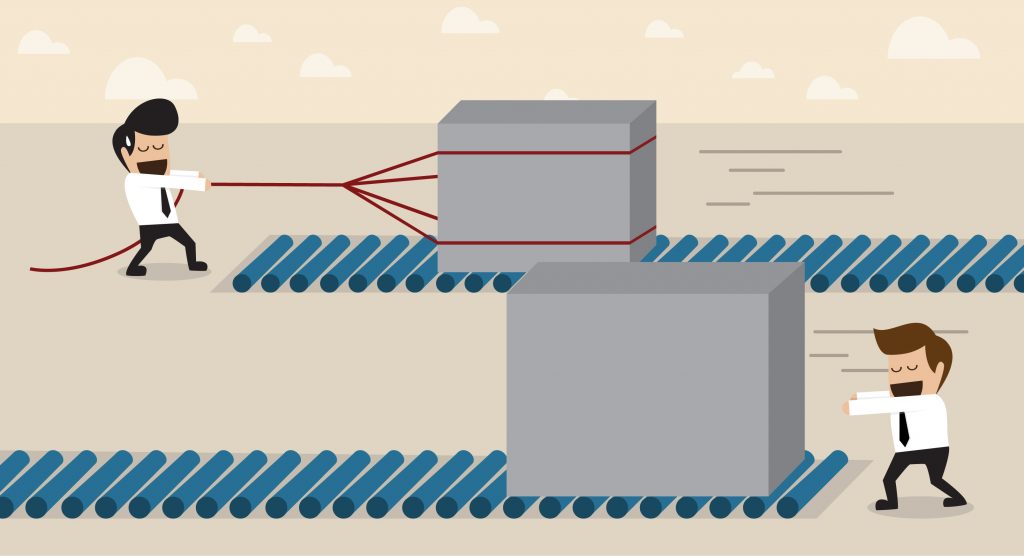If you’ve been in marketing for some time, then you’d already know what pull marketing is and what it does. However, if you’re newer to the field of marketing, then you wouldn’t know that there are three ways through which you can get customers to your website, your store, or even your sweet little kiosk. Well, there are and all of them are important. While this post is going to be about pull marketing tactics and we’ll get there (we promise), we’ll first explore what pull marketing is and what other types of customer acquisition tactics are out there.
Pull Marketing Tactics and Other Types of Customer Acquisition Tactics
You can conduct as many innovative revolutions internally as you want and make your business as efficient as Mother Nature herself but if you don’t have customers, you’re never going to get anywhere. Customer acquisition is the beginning of everything for any business. Pull marketing, the subject of this post is only one of three ways through which you can get people interested in your offerings and your business. The other two are push and product.
Pull marketing tactics are designed to lure potential customers into your ambit. It is a passive marketing technique where you don’t pursue your customers aggressively. Instead, you give them incentives to come to you. You can use anything to draw them to you ranging from free information to free support.
Push marketing is the opposite of pull marketing. Instead of pulling customers to your business, you push them towards you. This is the traditional method of marketing. Advertisements are the perfect example of push marketing. This method, of course, is very aggressive and proactive.
The third marketing method is product-based where you draw people in through the product itself. Every social media platform can be seen as an example of product-based marketing since existing users end up inviting people they know. An even better example would be Dropbox. You put something in Dropbox, share it with someone, and they end up signing up. Product-based marketing is very useful with Software as a Service (SaaS) offerings.
We won’t focus on product-based or even push marketing tactics here. Our focus will be on pull marketing tactics. So, which ones can you use? Consider.
#1: Blogging
If your business has an online footprint, then you need a blog. Period. Blogging is one of the most effective and absolutely mandatory pull marketing tactics for any business with online ambitions because of a number of reasons. Blogging is the most cost-efficient and versatile marketing technique.
For instance, when you blog, your content gets indexed on Google and draws in your target audience. Moreover, if you have an email list and send emails regularly, then you may be able to engage with your existing customers directly. Combining social media with blogging can help in both customer acquisition through referrals and customer engagement.
Blogs are also a wonderful avenue for promotions and announcements. Similarly, they can be used to educate your customers on how to best use your products. Furthermore, blogs can singlehandedly turn you into a thought leader in your industry. Blogging is beneficial for branding and reputation management as well.
#2: Resources
 People love free stuff. They will always love free stuff. Therefore, giving away free stuff is one of the most effective pull marketing tactics known to man. When you give away free stuff, you’ll get lots of people coming to your website or even your brick and mortar store. Needless to say, it is easier and more cost effective to give away free stuff online.
People love free stuff. They will always love free stuff. Therefore, giving away free stuff is one of the most effective pull marketing tactics known to man. When you give away free stuff, you’ll get lots of people coming to your website or even your brick and mortar store. Needless to say, it is easier and more cost effective to give away free stuff online.
The easiest, and also the noblest, thing to give away is information or knowledge. It is also valued highly, which means that people will not only be willing to come to you to get it but also exchange information for it such as their email addresses. What kind of information or knowledge can you offer for free?
- EBooks
- Guides
- Whitepapers
- Survey results
- Infographics
- Images
- Software
Each of these knowledge repositories serves a dual purpose. The first is that it draws people to you and makes them give their information in return for it. The second is that it becomes another passive mode of marketing for you.
For example, someone may download your eBook by giving his email address to you and ask someone else to do the same. The other person will also end up giving you their email address. Even if the eBook is shared between them, it acts as your marketing collateral and creates branding or even a sale depending on how you formulate it.
#3: Webinars
 When seminars are conducted online, they’re called webinars. Failing a face to face interaction, webinars are the most interactive way you can give away knowledge and information. They’re useful for customer acquisition and conversion both because of multiple reasons.
When seminars are conducted online, they’re called webinars. Failing a face to face interaction, webinars are the most interactive way you can give away knowledge and information. They’re useful for customer acquisition and conversion both because of multiple reasons.
The first is that webinars must be attended which means that an individual has to actively consume it as opposed to videos or blog posts which can be consumed passively. This active consumption makes the individual more susceptible to your suggestions or more inclined to take you seriously.
Webinars also allow the attendees to interact with you or another representative of your business. This creates personal connection that can not only draw the individual to your business but also move him along your sales funnel. Finally, webinars will almost always yield recordings that you can further use to draw in even more audience.
For example, if you conduct webinars strategically, after a while you’ll be able to create training programmes based just on your recordings. You can choose to sell these recordings for the sake of your bottom line or even offer them for free to boost customer acquisition even further.
#4: Outreach
It is never easy to get people coming to you on a regular basis. In fact, it is the toughest aspect to master for any start-up. The best way of building your own audience is to use pull marketing tactics that depend on leveraging other business’s captive audiences.
The best example of these types of pull marketing tactics is guest posting. When you post content on someone else’s blog, you get the chance to speak to their audience and, directly or indirectly, get them to your business. Another example of outreach is to appear on someone else’s podcast or webinar.
You can even conduct joint webinars and podcasts. Similarly, you can leverage backlinks to improve your SEO. It is even possible for you to speak at conferences to get someone else’s audience.
The internet is about connectivity. This means that it is naturally designed to allow people from one area to move to another. Therefore, when you try to leverage other people’s audiences, your task is only to oil the path between their asset and your own. There are various ways through which you can use outreach and the more innovative you are, the more ways you’ll find. All you need to do is study your target audience and analyse where they go repeatedly.




Leave a Reply